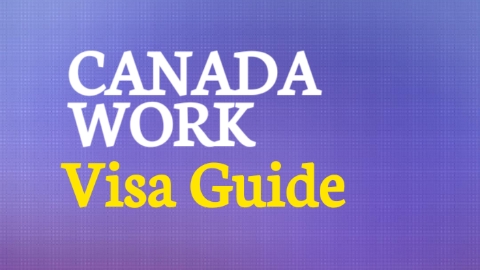Introduction to Canadian Work Visas
Canada offers various work visa options for foreign nationals seeking employment opportunities. These visas enable individuals to work in Canada either temporarily or permanently, depending on the type of visa and the applicant’s qualifications. Understanding the different categories and requirements is crucial for a successful application.
Types of Work Visas
#### Temporary Work Permits
Temporary work permits allow individuals to work in Canada for a specific employer and duration. Key categories include the Temporary Foreign Worker Program (TFWP) and the International Mobility Program (IMP). The TFWP requires a Labour Market Impact Assessment (LMIA) to demonstrate that hiring a foreign worker will not negatively affect the Canadian labor market. In contrast, the IMP facilitates work without an LMIA, focusing on broader economic and cultural benefits.
Permanent Work Visas
Permanent work visas are designed for individuals looking to immigrate to Canada permanently. The Express Entry system manages applications for three economic immigration programs: the Federal Skilled Worker Program, the Federal Skilled Trades Program, and the Canadian Experience Class. Candidates are ranked based on a Comprehensive Ranking System (CRS) score, and those with the highest scores receive an Invitation to Apply (ITA) for permanent residence.
### Eligibility Criteria
#### General Requirements
Eligibility for a Canadian work visa generally requires a valid job offer from a Canadian employer, proof of adequate financial resources, and compliance with health and security standards. Applicants must also demonstrate language proficiency in English or French through standardized tests like IELTS or TEF.
#### Specific Requirements
Each visa category has specific requirements. For instance, the Federal Skilled Worker Program mandates at least one year of continuous full-time skilled work experience, while the Canadian Experience Class requires at least one year of skilled work experience in Canada. Additionally, LMIA-based work permits necessitate a positive LMIA from Employment and Social Development Canada (ESDC).
### Application Process
#### Temporary Work Permits
The application process for temporary work permits involves several steps. Applicants must secure a job offer, obtain an LMIA if required, and submit an online application through the Immigration, Refugees and Citizenship Canada (IRCC) portal. Supporting documents, including a valid passport, proof of job offer, and LMIA, must be provided.
#### Permanent Work Visas
For permanent work visas, candidates start by creating an Express Entry profile and submitting the necessary information to receive a CRS score. Those with competitive scores receive an ITA, after which they must complete the permanent residence application within 60 days. Required documents include language test results, educational credential assessments, and proof of work experience.
### Conclusion
Securing a Canadian work visa involves navigating various categories and fulfilling specific requirements. Whether aiming for a temporary or permanent move, understanding the eligibility criteria and application process is essential. By preparing thoroughly and adhering to guidelines, applicants can increase their chances of successfully obtaining a work visa and pursuing career opportunities in Canada.


